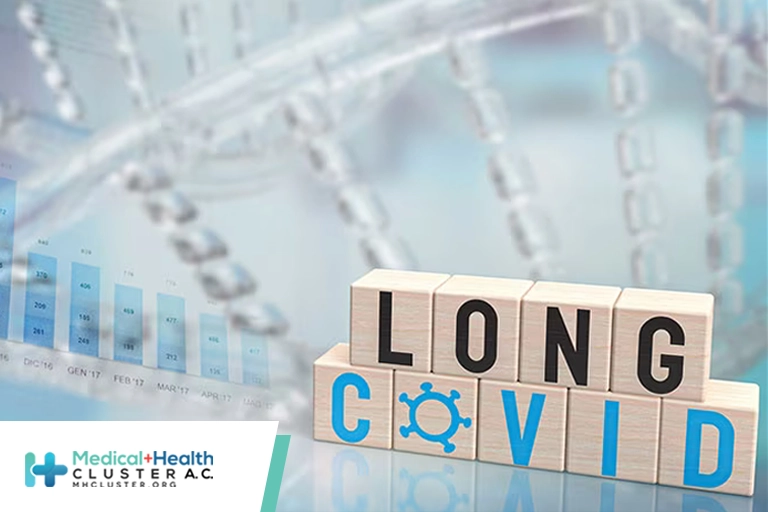En atención a la creciente preocupación sobre la confianza en...
Leer más
New-Onset Long COVID in Adults Less Likely After Reinfection

New findings suggest that the risk of developing long COVID after being reinfected is less for adults but is similar for children.
The likelihood of adults (aged 16 and over) self-reporting new-onset long COVID after a second infection with coronavirus (COVID-19) is lower than when compared with a first infection, announced the Office for National Statistics (ONS) today. However, there was “no statistical evidence” of a difference in the adjusted odds of new-onset, self-reported long COVID between first and second COVID-19 infections for children and young people (aged 2-15 years old).
The National Institute for Health and Care Excellence (NICE) describes long COVID as a “multi-system condition with a range of debilitating symptoms – signs and symptoms continue or develop after acute COVID-19, continue for more than 4 weeks, and are not explained by an alternative diagnosis”.
Earlier this month, in its report, Prevalence of ongoing symptoms following coronavirus (COVID-19) infection in the UK, the ONS highlighted that an estimated 2 million people living in private households in the UK (which equated to 3% of the population) were experiencing self-reported long COVID. Fatigue continued to be the “most common” symptom reported (71%), followed by difficulty concentrating (52%), shortness of breath (48%), and muscle ache (47%).
Adults At Greater Risk of Long COVID
For its most recent report, New-onset, self-reported long COVID after coronavirus (COVID-19) reinfection in the UK, the ONS used data from the COVID-19 Infection Survey. It identified that, since November 2021, four times as many adults as children and young people (4% versus 1%) reported having long COVID 12-20 weeks after a first coronavirus (COVID-19) infection.
Among those who did not report having long COVID after a first COVID-19 infection, again, four times as many adults as children and young people (2.4% versus 0.6%) reported long COVID following a second COVID-19 infection.
After adjusting for factors related to the risk of both COVID-19 reinfection and self-reported long COVID (sociodemographic characteristics, vaccination status, and the date of infection as an indicator of the variant type) among adults, “the odds of new-onset, self-reported long COVID were 28% lower after a second COVID-19 infection, compared with a first infection”, said the ONS.
Commenting on the finding, Daniel Ayoubkhani, data and analysis for social care and health division, Office for National Statistics, said: “Today’s analysis shows that adults who were infected with coronavirus (COVID-19) for a second time from 1 November 2021 were nearly 30% less likely to report new-onset long COVID, compared with those infected for the first time over the same period, even after adjusting for factors such as vaccination status and calendar date of infection as a proxy for variant.”
With regards to children and young people, the ONS said that there was “no statistical evidence” of a difference in the adjusted odds of new-onset, self-reported long COVID between first and second COVID-19 infections.
Detrimental Impact on Daily Activities Commonplace
Long COVID symptoms adversely affected the day-to-day activities of 1.5 million people, around 3 out of 4 (77%) of those with self-reported long COVID, highlighted the ONS earlier this month. For around 1 in 5 (19%), their ability to undertake their day-to-day activities had been “limited a lot”, it said.
“Similar differences in adjusted odds between first and second infections were observed when focussing on new-onset long COVID that limited daily activities, but at lower levels of prevalence – 2.8% for first infections compared with 1.6% for second infections among adults, and 0.6% and 0.4%, respectively, among children and young people”, explained the ONS in its new report.
There was no evidence of differences in the relative risk of reporting new-onset long COVID after a second COVID-19 infection, compared with a first infection, by age, sex, ethnicity, pre-existing health status, area deprivation quintile group, or vaccination status.
The prevalence of self-reported long COVID was greatest in people aged 35-69 years, females, people living in more deprived areas, those working in social care, those aged 16 years and over who were not working and not looking for work, and those with another activity-limiting health condition or disability, according to ONS figures.
“There remains some risk of new-onset long COVID after a second COVID-19 infection, with around 1 in 40 adults and 1 in 165 children and young people reporting long COVID symptoms 12-20 weeks after a second infection,” Mr Ayoubkhani cautioned.
A Treatment for Everyone: NICE
Earlier this week NICE announced that “everyone” with COVID-19 at highest risk of developing severe disease will have access to “clinically and cost-effective” treatments.
In the final draft guidance, the regulator recommended those at highest risk of developing severe disease – which included the immunosuppressed, or those with other conditions such as heart disease, respiratory disease, diabetes, or neurological conditions – would have access to treatments that are administered at home or in hospital.
The three treatments recommended are:
- Nirmatrelvir plus ritonavir (Paxlovid, Pfizer)
- Sotrovimab (Xevudy, GlaxoSmithKline)
- Tocilizumab (RoActemra, Roche)
Helen Knight, director of medicines evaluation at NICE, said: “NICE is the first health technology assessment body in the world to look at the clinical and cost-effectiveness of COVID treatments outside of their use during the pandemic.”
She expressed pleasure that now there is “something for everyone” with mild COVID-19 in the community that can help prevent the development of severe disease in those at highest risk.
Source: Medscape




